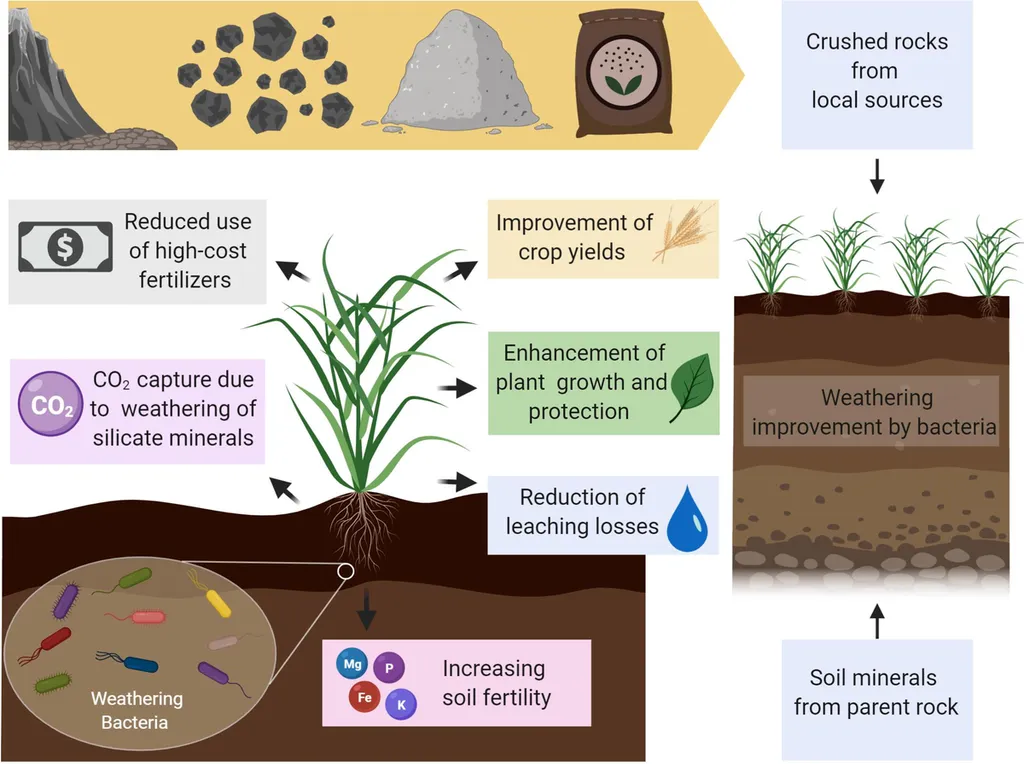In the quest to bolster agricultural productivity and sustainability, scientists are turning to the microscopic world of soil-dwelling bacteria. A recent study published in the journal *Applied and Environmental Microbiology* (translated as “Applied and Environmental Microbiology”) sheds light on how the evolutionary history of these beneficial bacteria can impact their performance in the soil. The research, led by Laura M. Kaminsky from the Boyce Thompson Institute in Ithaca, New York, explores the contrasting effects of evolving bacteria in soil versus nutrient-rich liquid culture, offering insights that could revolutionize the agricultural industry.
The study focuses on Priestia megaterium, a bacterium known for its ability to solubilize phosphorus, a crucial nutrient for plant growth. Kaminsky and her team conducted experimental evolution on this species under three different conditions: in soil only, in liquid media only, and in soil followed by liquid media. The goal was to understand how prior environmental conditions influence the bacteria’s fitness in soil.
The results were striking. Populations evolved in liquid media showed typical in vitro evolutionary phenomena, such as clonal interference and genetic hitchhiking. Notably, mutations in the sporulation transcription factor spo0A were observed, indicating a significant adaptation to the liquid environment. However, these adaptations came at a cost. When these bacteria were reintroduced into the soil, they exhibited a clear fitness reduction compared to the ancestral isolate.
“Our findings suggest that while liquid media is a convenient and unavoidable phase of inoculant production, it may not be the ideal environment for optimizing bacterial fitness in soil,” Kaminsky explained. This is a crucial insight for the agricultural industry, where the effectiveness of microbial inoculants is often inconsistent.
In contrast, populations evolved directly in soil grew slowly and experienced fewer generations despite longer absolute time, accumulating minimal mutational changes. This suggests that soil-dwelling bacteria may not undergo rapid evolutionary changes in their natural habitat. However, these populations did not show improved survival in their target soils compared to the ancestral isolate, though they did exhibit minor fitness reductions in unfamiliar soil.
The study highlights the complex interplay between bacterial adaptation and environmental conditions. “Bacterial evolution in more complex, real-world habitats does not closely resemble bacterial evolution in liquid media,” Kaminsky noted. This underscores the need for a deeper understanding of the ecology of beneficial microorganisms to improve their functioning in sustainable agroecosystems.
The implications for the agricultural industry are profound. As the demand for innovative solutions to enhance crop growth and reduce environmental impact grows, understanding how to optimize the performance of plant growth-promoting bacteria becomes increasingly important. This research could pave the way for developing more effective microbial inoculants, ultimately improving agricultural productivity and sustainability.
In the broader context, this study also raises questions about the adaptability of beneficial bacteria in different environments. As we strive to harness the power of microorganisms for various applications, from agriculture to bioremediation, understanding their evolutionary dynamics becomes crucial. This research is a significant step forward in that direction, offering valuable insights that could shape future developments in the field.
As Kaminsky and her team continue to explore the intricate world of soil microbiomes, their work serves as a reminder of the complex and often unpredictable nature of biological systems. In the quest for sustainable agriculture, understanding and leveraging these systems could hold the key to unlocking new possibilities.

